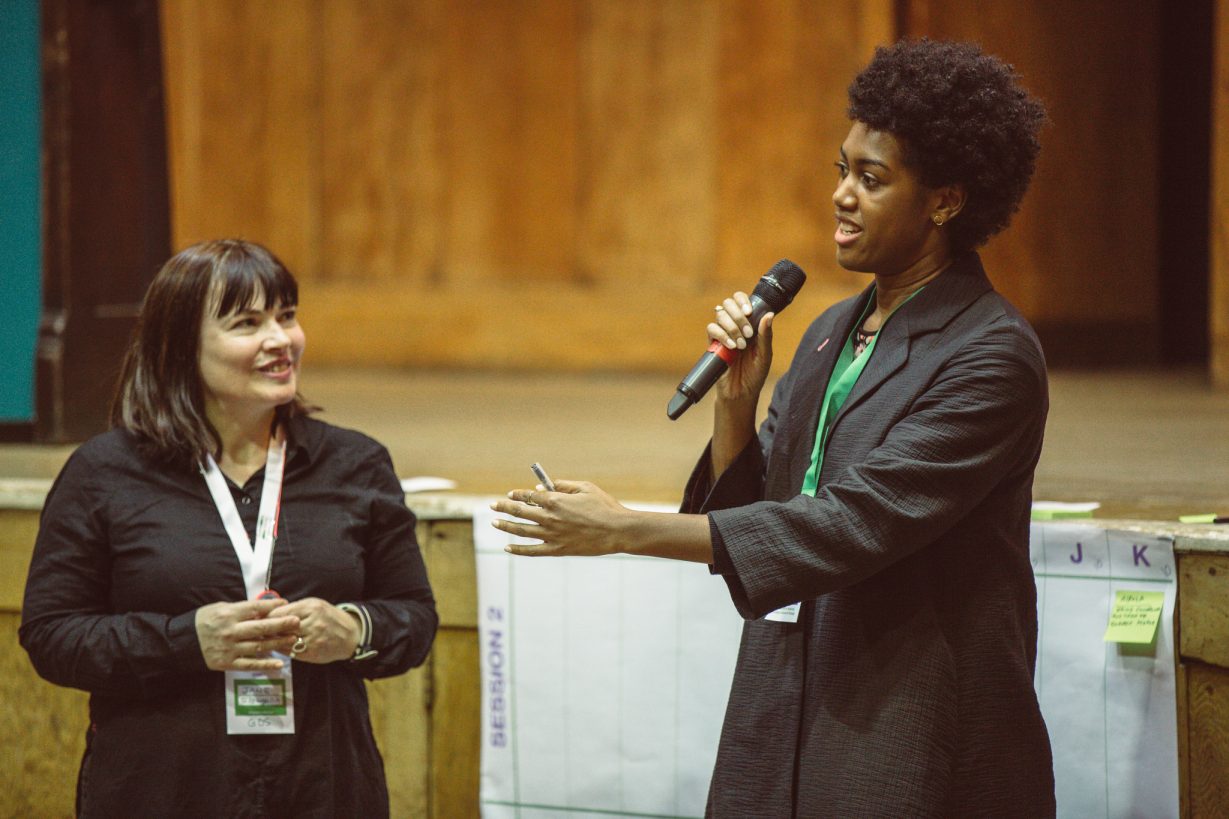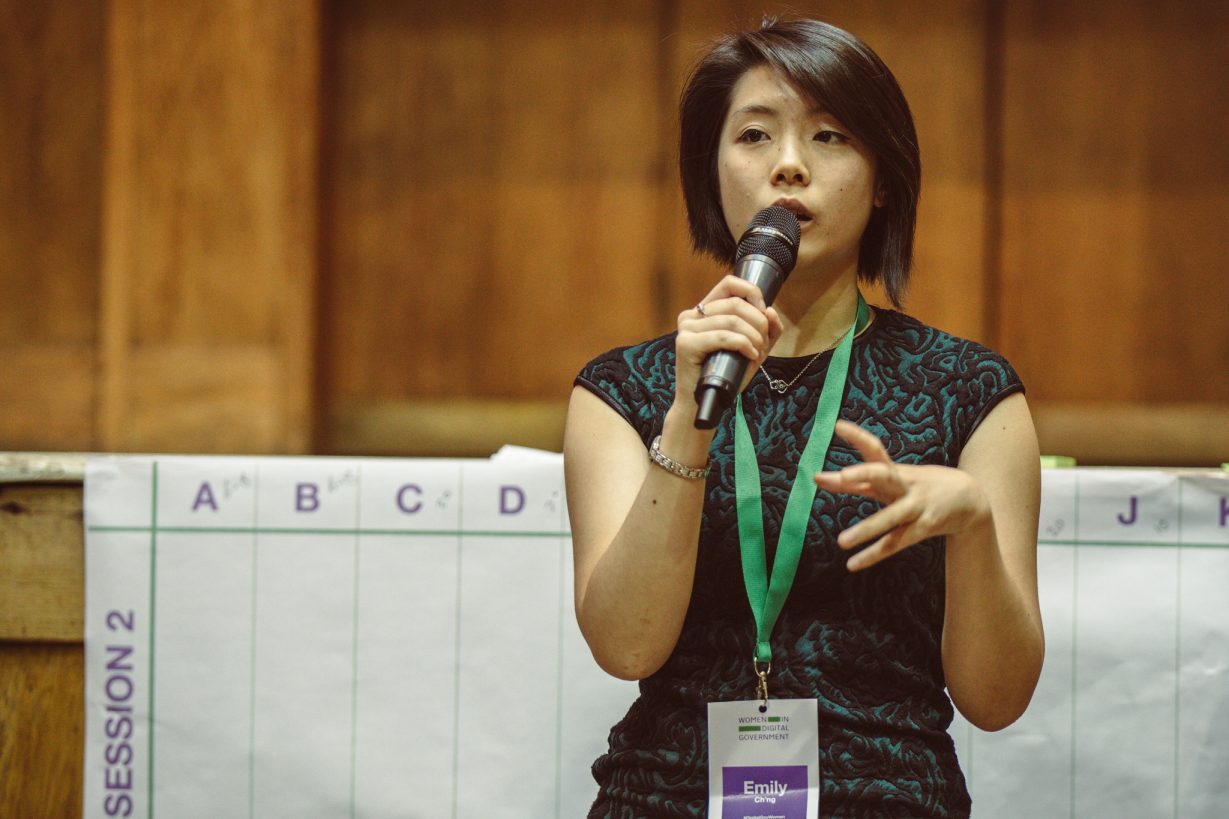Last year on International Women’s Day, we publicly announced the GDS Parity Pledge. It said that:
In future, no-one from GDS will take part in a panel discussion of two or more people unless there is at least one woman on the panel, not including the chair.
In future, no-one from GDS will speak at an event unless the event's organisers are clearly working hard to address gender diversity on stage. It's hard to put a number on this sort of thing, so we will make that decision based on what we see on each event's draft agenda
We'll hold ourselves to the same standards where GDS is the host, for internal events and public ones too.
Ideally, when GDS is invited to supply a guest speaker for an event, we’d like to send women to speak just as often as we send men.
So one year later, how have we done on our pledge?

More gender diversity at external events
Since 8 March 2016, we’ve sent 151 people from GDS to speak at 143 external events. We’re excluding small meet-ups from this as we don’t have a way of tracking who is speaking at these types of events. Occasionally, we’ve sent more than one person to speak together, or in different sessions, at the same event.
Of the 151 that attended, 88 were men and 63 were women. That’s 58.3% men and 41.7% women.
This time last year the figures were roughly 75% men and 25% women. So although we’re not quite at 50/50 equality a year later, we’re much closer to it.
More gender diversity at internal events, too
Internal Civil Service events are tracked differently. To find out what progress we’ve made with these, I looked at 4 events that took place within the past year:
- Civil Service Live 2016, which took place at 5 different venues across the country
- design community meet-ups every 2 months
- ConCon 3 and ConCon 4 – 2 separate content design events
At Civil Service Live, GDS ran a ‘digital hub’ with 6 presentations from speakers representing all our major programmes of work. Across all 5 locations, we sent 51 individual speakers with a breakdown of 29 men (56.9%) to 22 women (43.1%), slightly better than our external figure.
The design community meet-ups usually attract about 100 attendees. They are a mix of updates from senior leaders, guest speakers and show-and-tell sessions from design teams. From March 2016 to March 2017 there were 6 events with a total of 97 speakers, with a gender split of 59 men (60.8%) to 38 women (39.2%). There is overlap of speakers where the heads of design are largely the same at every event, though. Once again, a very similar total to the external events figure.
ConCon is a biannual event run by the Content Design Community. Each ConCon event is a mix of keynote speeches and workshops. For the last 2 events (ConCon 3 and 4) there was a gender split of 24 men (46.2%) to 28 women (53.8%).
How did we get there?
The figures show a definite improvement, and we believe that it’s largely a result of that public pledge. Having it online as a shareable post has made it easier for us to explain our diversity values to event organisers.
Our conversations with those event organisers have varied. In a small number of cases, we’ve had to pull out of conferences where the organisers did not demonstrate a commitment to the same values.
Organisers have said things like:
- they “invite only the best people to speak at events, it just happens that they are male”
- “women are not suited to a career in business, we will not invite them to speak simply to suit your agenda when we do not see that there is a problem”
We didn’t speak at those.
Making a difference
But the majority of our conversations with event organisers have been extremely positive.
Many are eager to learn how they can improve on diversity at their events. Some said that they struggled to find diverse speakers. We helped where we could by providing lists of colleagues across government and at GDS who are experts in their fields. Others said that, during the past year, they have taken action to make their events more diverse. Some have actively and openly adopted the same pledge.
In addition, the GDS Women’s Group and in-house Creative Team have set up presentation and public speaking training sessions. Over the past year we’ve trained more than 270 people at GDS to deliver presentations, and worked closely with 10 women on a longer, more detailed trial version of that training, spread over 6 weeks. It covers everything from writing Call for Paper submissions, to preparing slides and being able to present them confidently.

Being the change we want to see
Our pledge has made a difference. Better representation on stage helps to encourage women to apply for roles they didn’t think were for them, or to attend conferences where they didn’t think they were welcome. It encourages women to be part of the discussion and it welcomes different points of view on stage.
There are so many amazing women working in tech and digital fields who don’t get the opportunity to speak on stage, and don’t get the same level of recognition as their male peers. That is something that we still want to change.
As we said last year: “This is not tokenism. This is important. This is us doing our bit, and taking action.”
And through taking action, we’re starting to see change happen.
Follow GDS on Twitter, and don’t forget to sign up for email alerts.



7 comments
Comment by Persis Howe posted on
Hi Zara,
Thanks so much for reporting on this. Your quotes from conference organisers above really show the scale of the problem.
As the person who's scheduled the last 4 ConCons, I'm happy to have gender balance (bow). But I'm also horrified that the percentage of women speaking is so low.
I'd guess the content team at GDS is more than 50% female. I'd guess most content teams are more that 50% female. So we in content need to do more to encourage female speakers.
The training you're running sounds really helpful. I moved to Japan and taught school for 3 years to get over my fear of public speaking. I'm glad there's a better way!
I'm also encouraged by the numbers from ConCon5 on 15 March. At that event there were 22 speakers, 9 men and 13 women. So 41% men and 59% women, which I would guess is more indicative of the community.
Comment by Leanne posted on
This is a really interesting article and approach.
I have attended many conferences about digital transformation in the public sector and have often been struck by the lack of female representation.
I am so shocked by the comments that were made by some of the organisers.
Keep up the good work until it becomes unnecessary.
Comment by Paul posted on
This is really great to hear.
I just wanted to mention another plus of encouraging female speakers, which is that it gets us men more used to the idea of seeing women as technical authorities, as people with interest in their subject, knowledge and something worth listening to who are serious about what they do.
Statistically, if a woman applies for a technical job a majority of the people interviewing her will be men, and she will be in a minority of the interviewees. The more those men are exposed to women in technical roles, hopefully the less of an effect both explicit and implicit biases will have in the interview, hiring and career development processes.
Hopefully what you and others are doing will help create a virtuous circle of more women going into technical fields and more men able to judge them on an equal footing.
Keep up the awesome work.
Comment by Charles posted on
So that is really good. I award it 4 stars.
For 5 stars, How does it show against the gender ratio of GDS itself?
If GDS happens to be 60% male then you have rolled the snowball up the extremely steep hill.
Comment by Zara Farrar posted on
Thanks for your comment, Charles.
Over the past year we've been working to get accurate diversity data for GDS. We're now at the stage where 80% of the organisation have declared their diversity stats into our HR system. We should be able to publish this data soon so we can hold ourselves to account.
However, the data will only cover civil servants at GDS and not contractors. Some of the speakers that are counted in our stats are contractors as we need to track their appearances if they are representing GDS or talking about GDS work.
We should be able to track how we are publicly representing GDS against the gender make-up of the organisation.
The next step is to look beyond that and look at the different areas of GDS. For example, what percentage of women do we have working in GaaP, what percentage go and speak at events, and are some areas of the organisation under-represented?
Comment by Alice posted on
It's a shame diversity data still isn't available, but I know you're working on it. To add to Charles's comment, I hope that the women going out to speak again and again who make these above-average stats possible are being supported. (I think from experience that GDS is more than 50% men.) Being an ambassador for women in tech is an important role, and it should be in people's objectives rather than stuck on as an extra obligation on top of their day job.
Comment by Sharon posted on
This is great. As a fairly new starter at GDS I'm speaking next week at a conference. I've never spoken in front of a large audience before and it's a great opportunity. In my previous job it was generally senior people (women and men) who spoke at conferences - it's brilliant that GDS encourages people in all roles/levels to do this kind of thing.